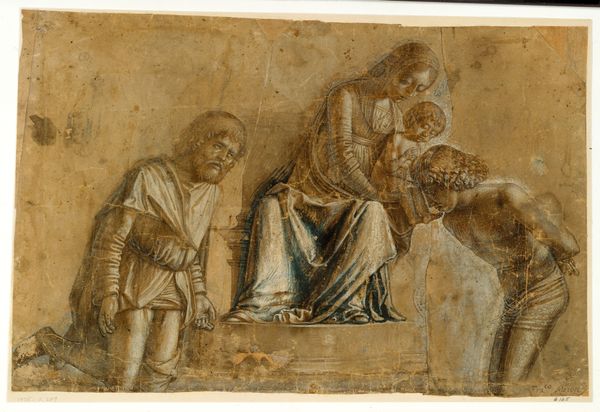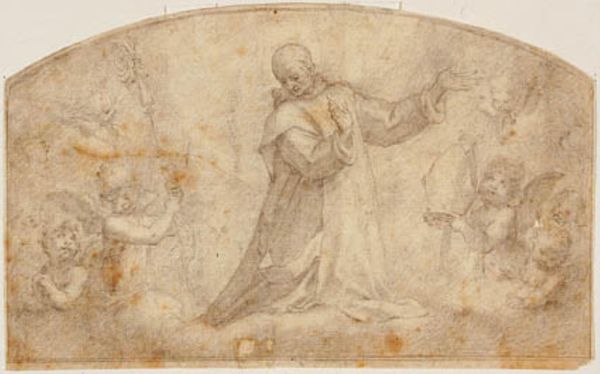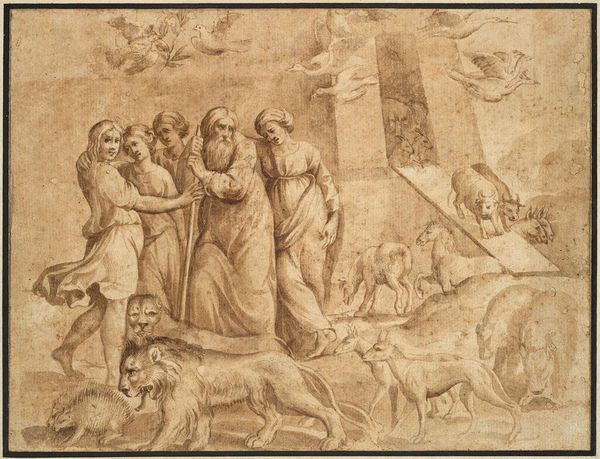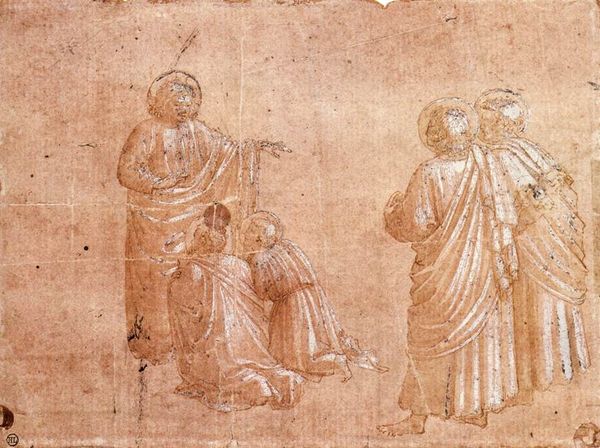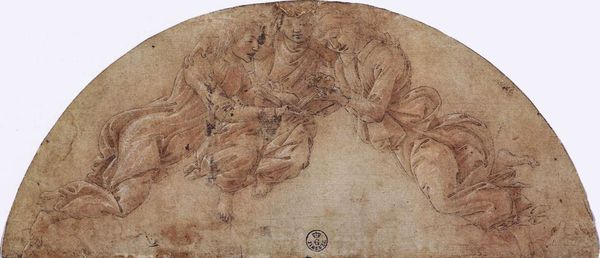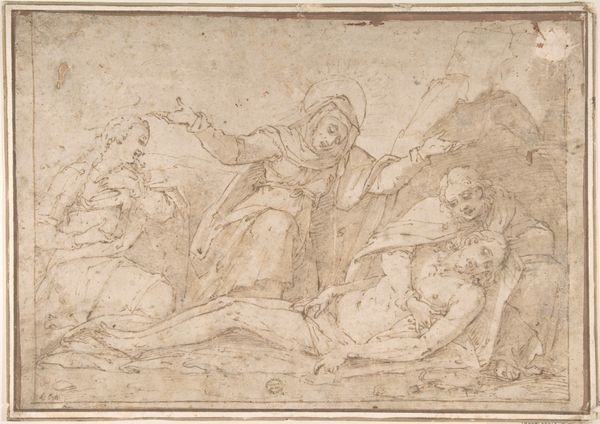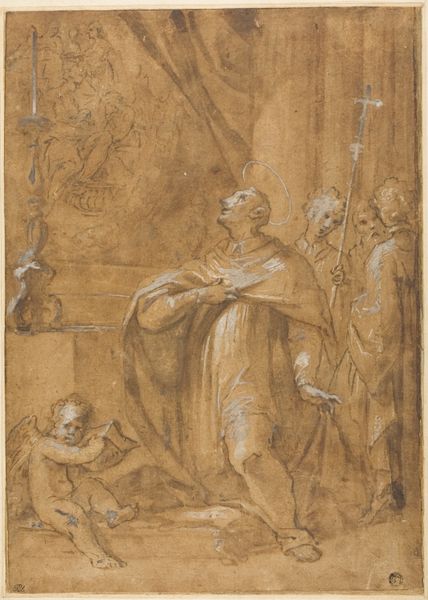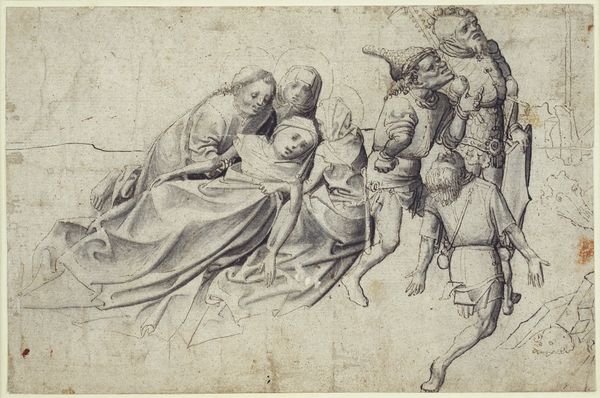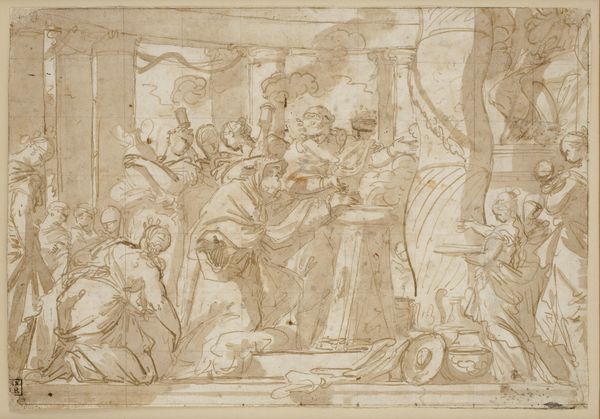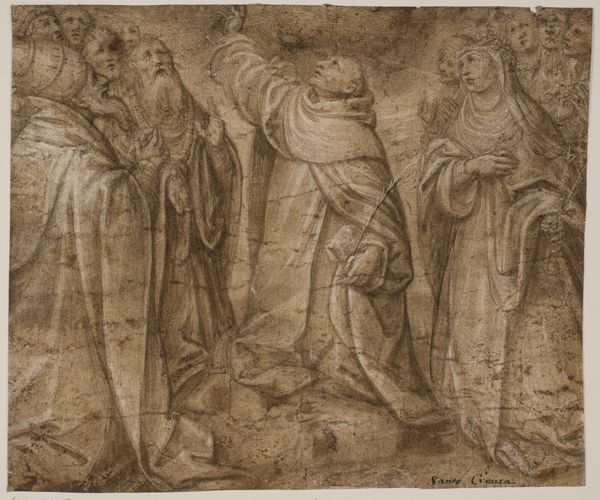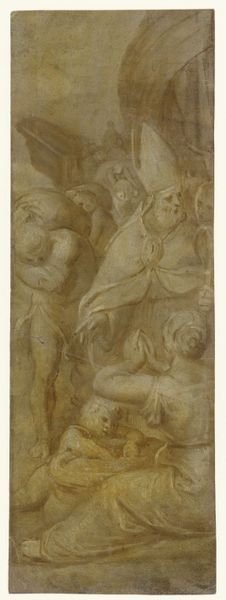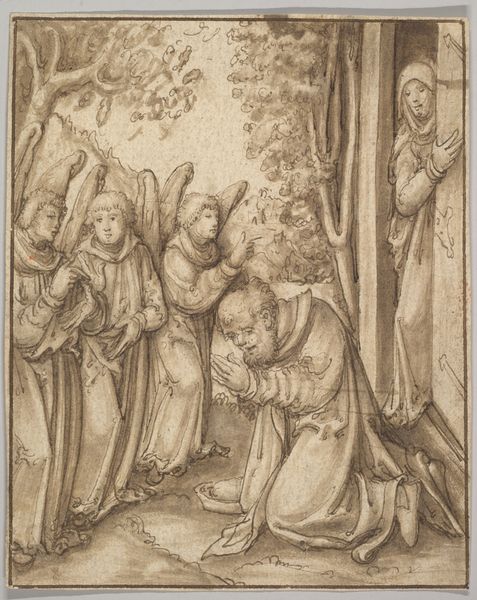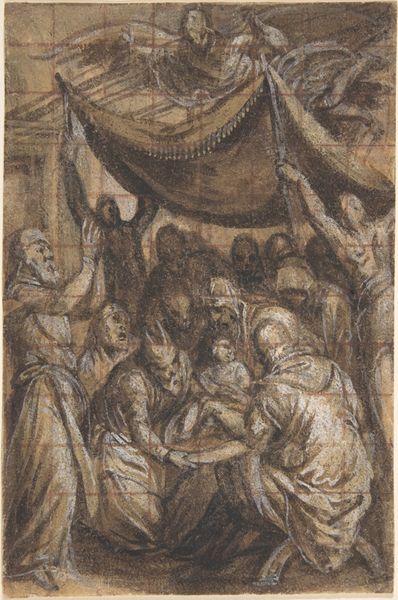
drawing, paper, ink, charcoal
#
portrait
#
drawing
#
charcoal drawing
#
figuration
#
paper
#
11_renaissance
#
charcoal art
#
oil painting
#
ink
#
child
#
charcoal
#
charcoal
#
italian-renaissance
#
early-renaissance
#
christ
Copyright: Public domain
Curator: Oh, the first thing I notice about Botticelli's "Adoration of the Child" is its immediate intimacy. It's as though you've stumbled upon a tender family moment. Editor: My immediate reaction is to consider this humble paper and the materials used. Botticelli chose charcoal, ink, perhaps a little wash—everyday materials transformed by the artist's skill, in about 1495. The objectness of it makes me wonder about access and value. Curator: Yes! There's something so direct and unassuming about the choice of media. Unlike the glittering golds and vibrant hues you might expect, Botticelli’s restraint speaks to the simplicity of the scene, stripping away the pageantry. I can almost feel the grit of the charcoal on my fingers if I look too intently... it's quite affecting, really. Editor: Indeed, charcoal is key here. How accessible was it? Who would have sourced the materials? The act of preparing charcoal involves laborers and systems of resource extraction. You also must think, this image on paper contrasts sharply with Botticelli's better known, large-scale panel paintings made with precious pigments that might have been commissioned by powerful merchant families of Florence at the time. Curator: I'm captivated by the expressiveness he coaxes from the monochrome medium; it highlights the starkness of the holy family. Look at Joseph's furrowed brow, the gentle bend of Mary's head, the babe reaching into thin air! It invites you to pause, contemplate their humanity as tangible people. Editor: Right. The limited tonal range created with humble black media on unadorned paper intensifies this intimate family drama. Considering paper’s history, made from processed plant fibers, and contrasting its mass-produced ubiquity today against the paper substrate from 15th-century Italy heightens my focus on how labor, trade, and access structure even devotional images such as this. Curator: I find it curious, though, this work being in the Uffizi with all the grander fare surrounding it. Placed alongside Botticelli's other works like "Primavera", this humbler work perhaps hints at a side of Botticelli wrestling with form, a looser vision in tandem with the refined linearity he’s known for. I think of his personal, introspective feelings in a life during considerable religious, artistic, and cultural shift in the Italian Renaissance! Editor: Seeing the final image—the paper aged, creased, preserved in Florence—reminds me that we encounter the work today as part of art-historical infrastructure; how a raw rendering becomes venerated relic is telling of shifts in cultural worthiness. Curator: Ultimately, the Adoration strikes me as deeply moving and intimate. Botticelli wasn't merely depicting a religious scene, he was distilling a raw human relationship through incredibly economic use of accessible resources, don’t you agree? Editor: Exactly—this drawing reframes assumptions about high art when its value stems both from artist genius and humble materiality.
Comments
No comments
Be the first to comment and join the conversation on the ultimate creative platform.
